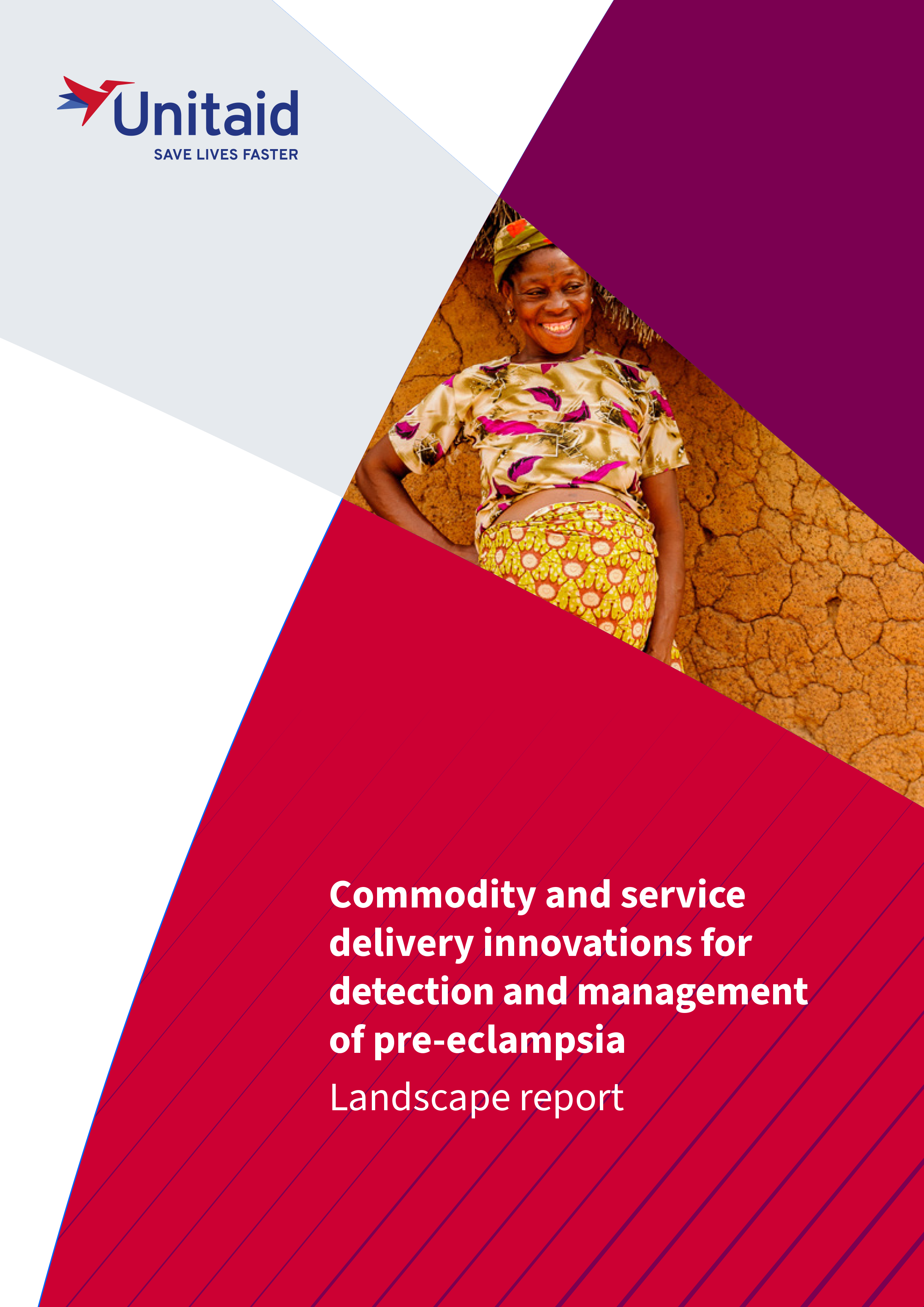Key points
Geneva – A new report released today by Unitaid, “Landscape report on commodity and service delivery innovations for detection and management of pre-eclampsia,” offers a comprehensive overview of the tools and solutions for addressing pre-eclampsia/eclampsia, a pregnancy-related medical condition that endangers the lives of pregnant women and their unborn babies worldwide.
Every day, over 800 women die due to complications in pregnancy and childbirth. Nearly all these deaths occur in low- and middle-income countries. Pre-eclampsia is characterized by high blood pressure (hypertension), proteinuria (protein in urine), and/or signs of maternal end organ dysfunction, most often in the liver and kidneys. Eclampsia is the onset of seizures in a woman with pre-eclampsia.
“This landscape analysis of tools and solutions to address pre-eclampsia is critical for partners like us in Sierra Leone and other low- and middle-income countries,” said Dr. Austin H. Demby, Minister of Health for the Republic of Sierra Leone, in the report’s foreword. “It helps us identify the highest priority interventions that should be available in every health center and hospital, and in the hands of every midwife and doctor, and the processes for ensuring that there is reliable access to those products.”
Pre-eclampsia endangers between 3-10% of pregnancies globally and is responsible for over 76,000 maternal deaths and 500,000 perinatal deaths annually, including 200,000 stillbirths. Over the past 30 years the incidence of pre-eclampsia has increased by 11%, in parallel with a rise in non-communicable diseases including diabetes, obesity and hypertension, which are risk factors for pre-eclampsia.
“The best way to prevent pre-eclampsia and eclampsia is through timely and comprehensive antenatal care,” said Kelsey Barrett, Unitaid’s technical manager for maternal and child health. “What is provided in those antenatal care visits is critical and health workers need the diagnostics and therapeutic tools to provide care that is high quality and can mitigate the risks that lead to pre-eclampsia complications.”
Unitaid’s report highlights several new diagnostic tools that have the potential to identify a woman’s risk of developing pre-eclampsia or the condition’s worsening. Two blood biomarker-based tests – serum FMS-like tyrosine kinase 1 (sFlt-1) and placental growth factor – have potential to be adapted for use in low-resource settings to better inform care for women at risk of pre-eclampsia/eclampsia.
The report also examines current prevention and screening interventions that should be routinely used in quality and comprehensive antenatal care visits. Blood pressure measurement, for instance, is the cornerstone of diagnosis and monitoring of pregnant women. The study underscores the importance of ensuring that antenatal care clinics use validated blood pressure devices, and that medical staff are well trained. The report highlights innovative health technologies like OptiBP, an app for blood pressure self-monitoring and CRADLE VSA, a semi-automatic device that makes interpretation by health care workers easier thanks to the use of a traffic light warning signal.
Unitaid’s landscape report represents the organization’s commitment to improving access to better tools for safe pregnancy and birth for women and newborns, one of its core programmatic priorities.
“Ensuring that mothers and newborns receive quality care in a well-functioning health system is an effort that requires everyone’s inputs, from government officials to health workers to community leaders,” says Janet Ginnard, Unitaid’s Director of Strategy. “Unitaid knows that access to quality assured maternal newborn health products requires community leadership, healthy markets for lifesaving tools, and quality care. Together we will achieve impact.”

Melanie Brooks, Strategic Communications Officer
Mobile: +41 79 525 62 91
Email: brooksm@unitaid.who.int